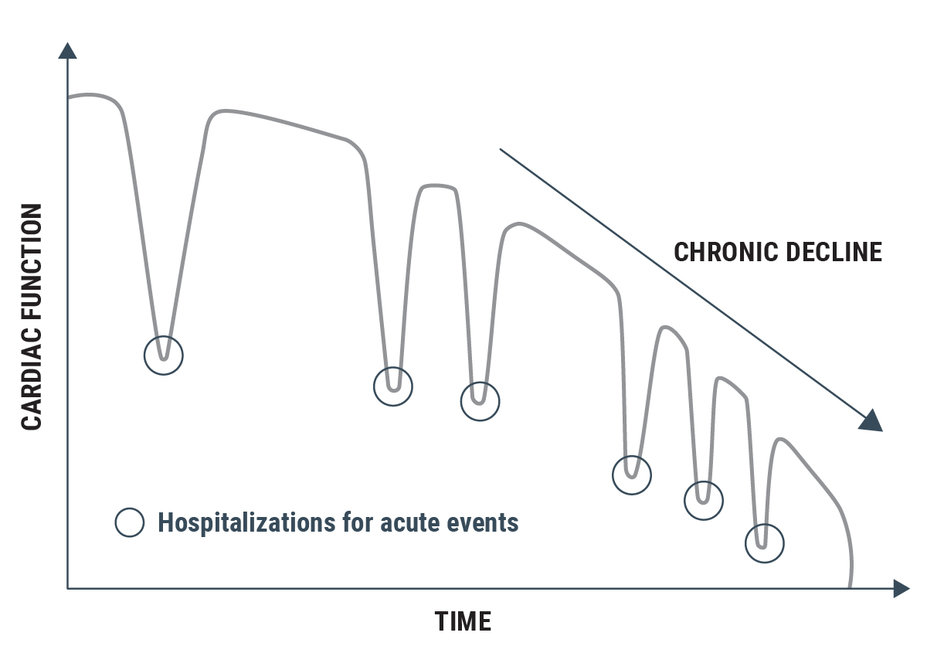Heart failure is a continuous, progressive disease—are your patients’ therapies optimized?
Even if your heart failure patients seem clinically stable, their underlying disease may be progressing1-3
Adapted from Mesquita ET, Jorge AJL, Rabelo LM, et al. Int J Cardiovasc Sci. 2017;30(1):81-90. ©The International Journal of Cardiovascular Sciences
According to data from the Get With The Guidelines®-Heart Failure registry, 3 OUT OF 4 HF PATIENTS DIE WITHIN 5 YEARS across HFrEF, HFmrEF, and HFpEF4†
Sudden cardiac death accounts for 40% to 45% of all deaths in HFrEF patients5
In a study with a median follow-up of 27 months, 1 hospitalization put HFrEF patients at up to 6x greater risk of death vs those who had not been hospitalized for HFrEF6,7§
*In PARAGON-HF, defined as LVEF ≥45% with structural heart disease (LAE or LVH); median LVEF was 57%. LVEF is a variable measure and the normal range can vary.7
†In a study including patients with HFrEF (LVEF ≤40%), HFmrEF‡ (LVEF 41%–49%), and HFpEF (LVEF ≥50%) who were ≥65 years old and hospitalized for HF, the GWTG-HF registry was merged with claims from the US Centers for Medicare & Medicaid Services from 2005 through 2009, with 5 years of follow-up through the end of December 2014. A total of 39,982 patients from 254 hospitals who were admitted for HF were included: 18,299 (46%) had HFpEF, 3285 (8.2%) had HFmrEF, and 18,398 (46%) had HFrEF. Overall, median survival was 2.1 years. In a risk-adjusted survival analysis, all 3 groups had a similar 5-year mortality (HFrEF 75.3% vs HFpEF 75.7%; HR 0.99 [95% CI: 0.958–1.022]; HFmrEF 75.7% vs HFpEF 75.7%; HR 0.99 [95% CI: 0.947–1.046]).
‡Defined as "HFbEF" (HF with borderline EF) in the analysis.
§Post hoc analysis of the PARADIGM-HF study, a multinational, randomized, double-blind trial comparing sacubitril/valsartan to enalapril in 8442 symptomatic (NYHA Class II–IV) HFrEF patients (LVEF ≤40%). For the primary end point, composite of CV death or first HF hospitalization, sacubitril/valsartan was superior to enalapril (P<.0001). This post hoc analysis examined the association of first nonfatal events—either HF hospitalization, ED visit, or outpatient intensification of HF therapy—with subsequent mortality during the trial. For the 1107 patients in the study who had a hospitalization for worsening HF as a first event, vs those with no event, the HR for mortality was 6.1 (95% CI: 5.4–6.8).6,7


